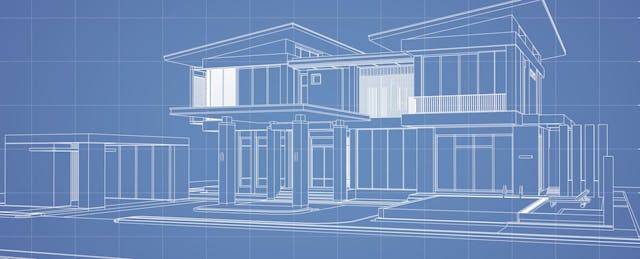School buildings and their learning environments have remained relatively static over time. The majority of our schools are decades old, and have not undergone a major redesign since they were originally built. These classrooms were built for traditional, “chalk-n-talk” modalities and passive learning—they are not prepared for today’s more active learning approaches.
The United States has over $2 trillion invested in its school buildings, the majority of which were designed as "cells and bells." Cells are the classrooms students inhabit until the bell rings, at which point they move on to another cell. This model for schools has been prevalent for over a century, finding its roots in the Industrial Revolution and large-scale manufacturing ideals.
But what does the future of learning look like? If we apply principles from architecture, learning should be flexible, collaborative, sustainable, and filled with daylight.
How to Make Spaces More Learning-Driven and Personalized
In our rapidly changing world, today’s students need the knowledge, skills and dispositions to be successful in the complex future that awaits them. Specifically, 1) they must learn to work and thrive in an increasingly connected economy, and 2) they must solve problems, collaborate and create.
While the architecture of schools is not an answer to transformation in and of itself, school design holds huge potential for both creating and supporting the daily habits of successful schools. Not only are some spaces more inspiring and healthier to occupy, but simply investing in a space provides the messaging to kids that they matter. That they deserve a beautiful space to be in, because we care that they are learning and constantly improving.
We know that people learn differently from one another—so why do classrooms all look the same? In learner-driven + personalized spaces,the architecture supports collaboration among groups of students and educators, with plenty of space for inquiry and hands-on learning such as makerspaces, and lots of space for students to move around and be active. These spaces will have:
- Lots of flexible seating options so that the space can be easily reconfigured for different purposes
- Soft seating options for students to be comfortable as they investigate independently and learn
- Movable walls so that teachers can create quiet breakout instructional areas based on needs

Creating these flexible interior environments is a giant step toward personalizing learning for students. Giving them a fun space to occupy helps to create a culture of learning and exploration, and this is a necessary change if curricula are going to continue to trend toward more personalized strategies. But I argue we need to take one more step back and look at the school building and its systems as a whole. Redesigning the architecture of schools to be more sustainably-focused is where we begin to see measurable impact on learning.
Benefits of Sustainable Design on Learning Outcomes
Sustainability (environmental stewardship, social consciousness, and economic feasibility) and schools go hand-in-hand. First, we are educating our kids for the future world they will live in, and learning how to be a productive steward of the environment is an important lesson for schools to teach. Additionally, green schools are an effective way to implement cost-effective strategies that benefit learners.
From an operations/management perspective, green schools achieve indirect savings of nearly $70/square foot (sf). According to a report co-authored by the American Institute of Architects (AIA) and the U.S. Green Building Council, usually $12/sf goes back to the school directly in the way of energy savings, lowered water costs, improved teacher retention and lowered health costs.
“Greening school design provides an extraordinarily cost-effective way to enhance student learning,” says environmentalist Gregory Kats, Managing Principal of Capital E—a venture firm that invests in green organizations.

The benefits of green schools extend beyond the economic. High performance schools provide hands-on educational opportunities that conventional schools do not. For example, on-site renewable energy generation, water conservation features and other green technologies provide valuable opportunities for hands-on learning and increased student performance. In a survey of hundreds of school leaders, 70% of those in green schools reported reduced student absenteeism and improved student performance. A 2005 study of the cost and benefits of green schools in Washington State estimated a 15% reduction in absenteeism and a 5% increase in student test scores.
Hold on—are you saying that the building itself can affect attendance and test scores? Certainly.
A major feature of green schools that contributes to this increase in student performance is the abundance of daylight and openness. Daylight has proven effects on increasing happiness and ability to concentrate. Until the 1950s, daylight was the predominant source of light in classrooms, but as electricity costs declined, so did the use of natural light in buildings. In one illustrious study comparing daylight in classrooms and holding other factors constant, student performance in the classrooms with the most daylight increased by 21% when compared to the least. Another report, published in the National Clearinghouse for Educational Facilities, states that “students with limited classroom daylight were outperformed by those with the most natural light by 20% in math and 26% on reading tests.”
Those numbers are no joke. Natural light has proven to be a significant factor in happiness and performance in the workplace and at home, and we need to begin bringing daylight back into schools.

Rethinking School Buildings
Creating a space that can catalyze school transformation is not a one-size-fits-all solution; each school has its own goals and challenges that it must design for. However, the common refrain of a more “personalized,” healthy future for students helps us think about the broad needs of learners, and the specific spatial qualities that support that mindset shift.
Innovative school design isn’t simply about taking away walls and making spaces moveable; it’s about creating a variety of spaces that cater to specific learning needs, and providing a safe and healthy environment where kids feel valued. It’s about investing in healthy, environmentally-conscious schools that will inspire the future generation. School buildings and classroom spaces play a major role in the transition to the Future of Learning.
With so much effort going into changing teaching and learning practices, maybe it’s time to rethink how our physical school buildings need to change, too.


